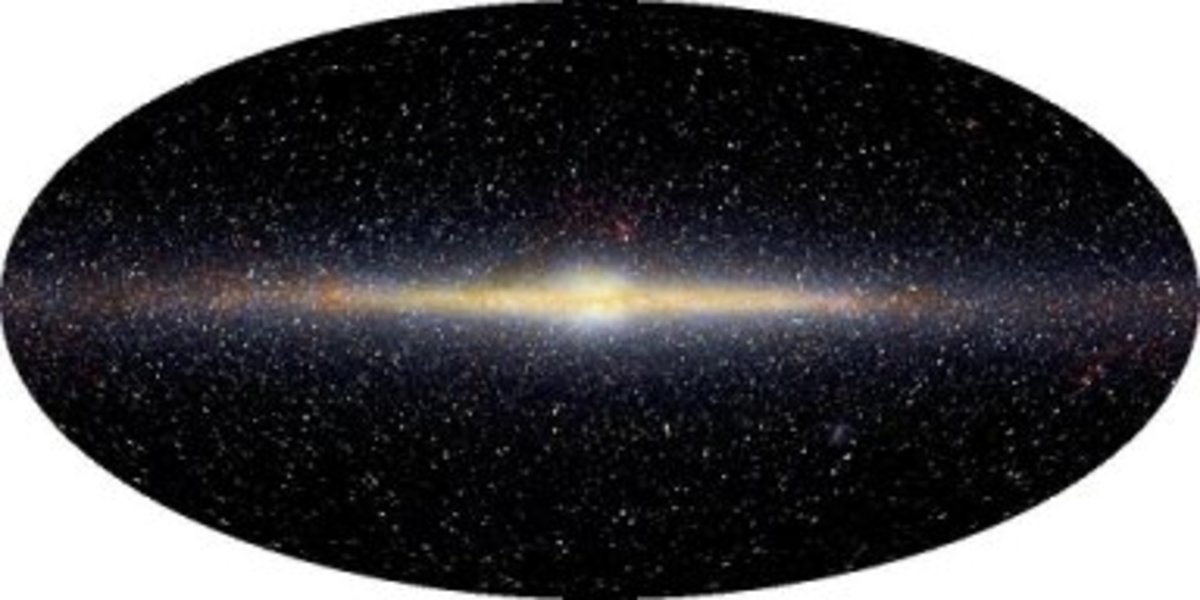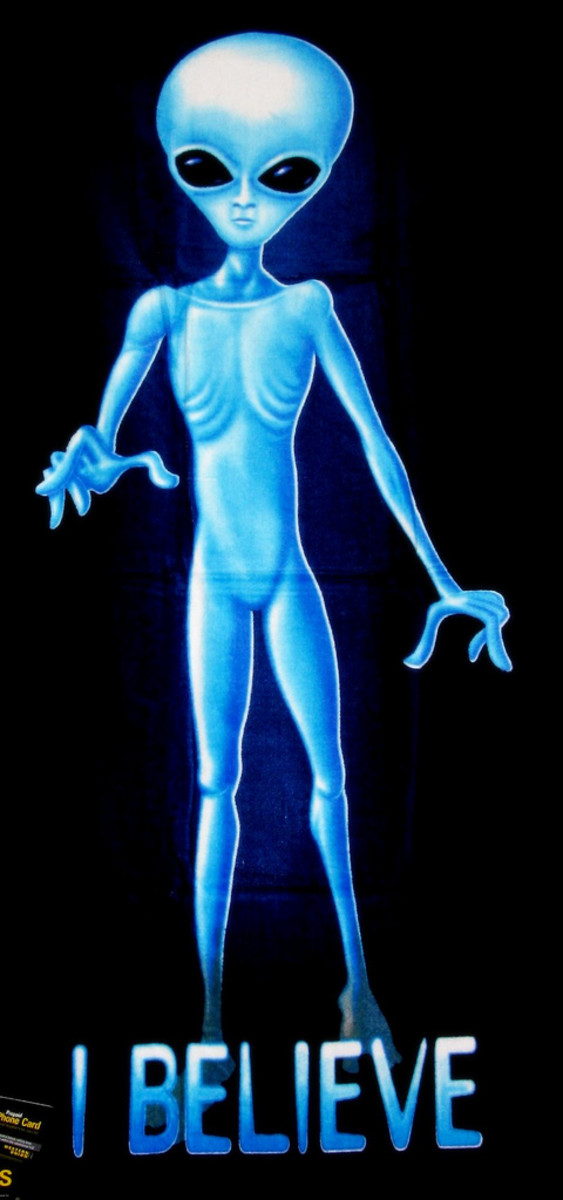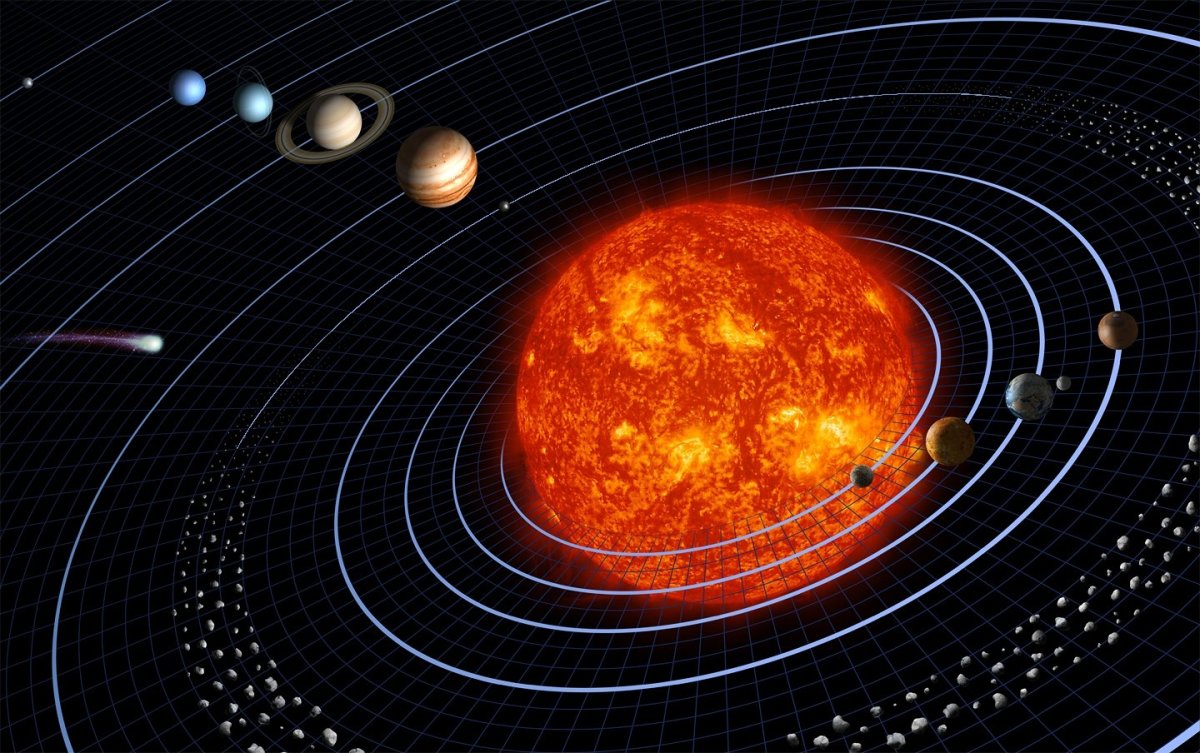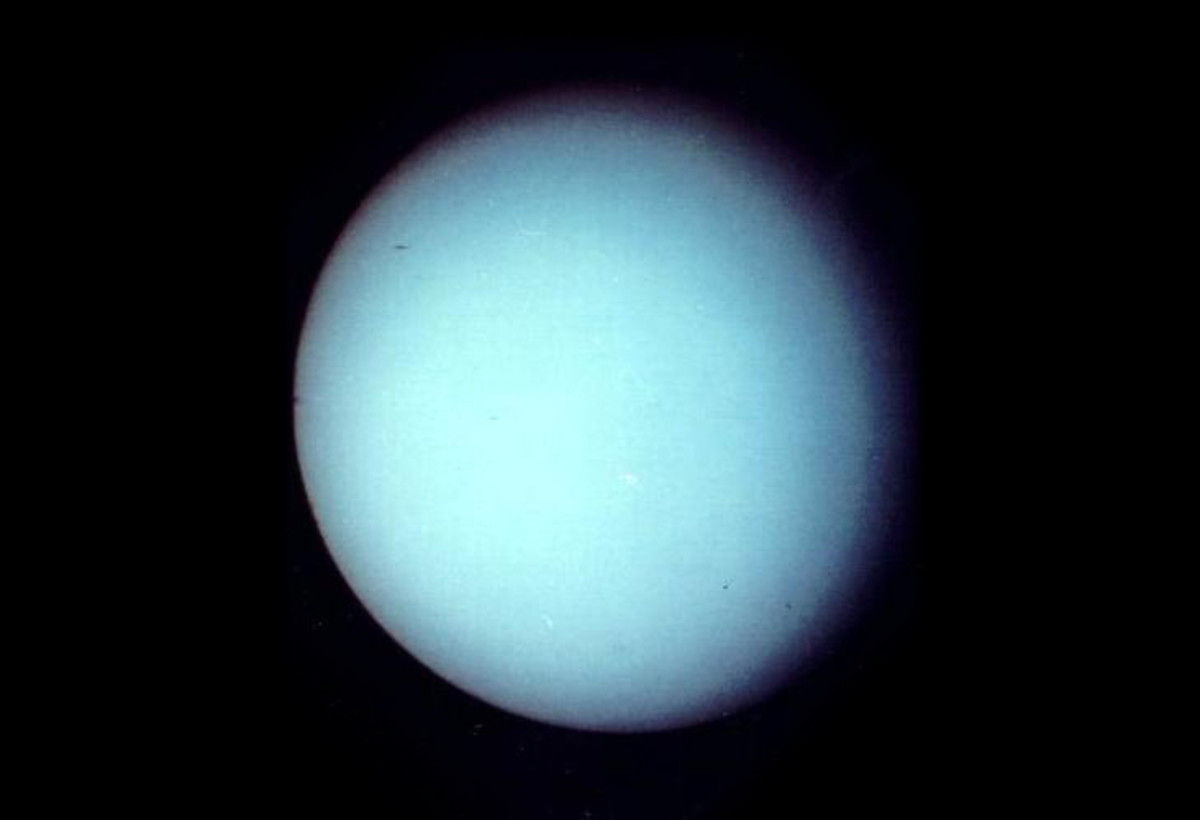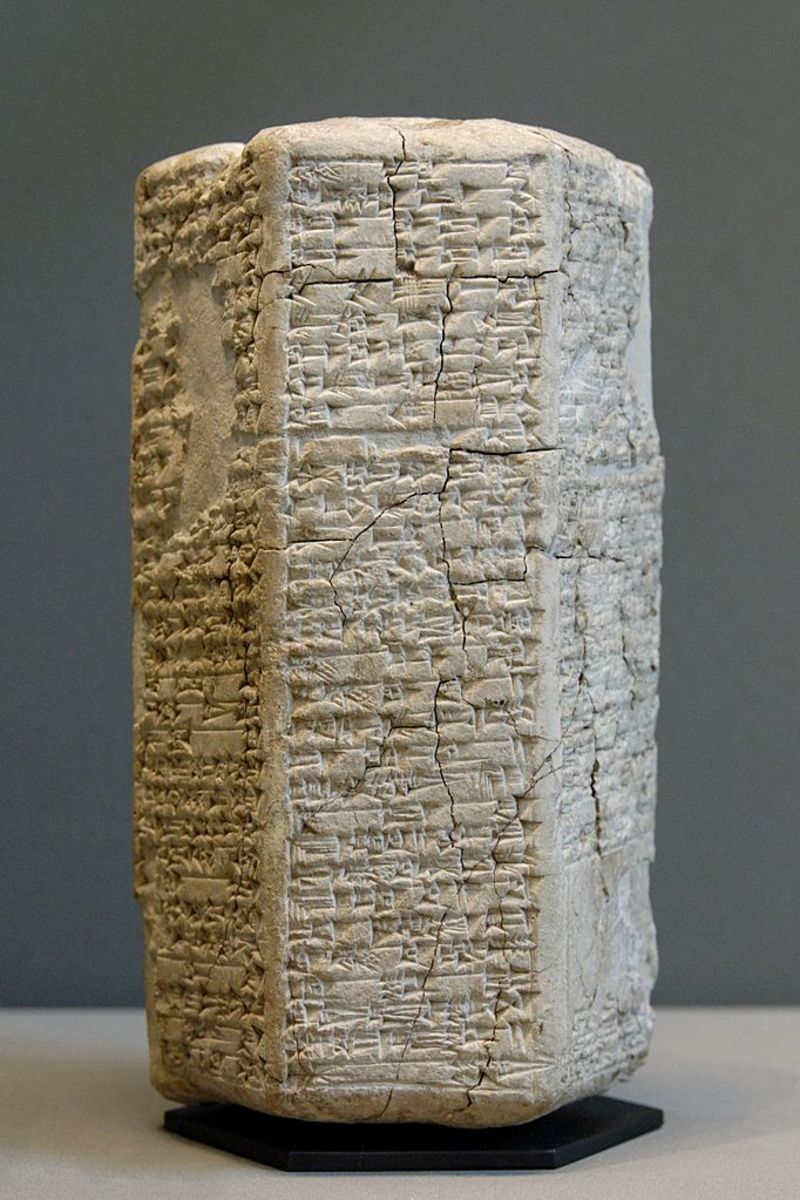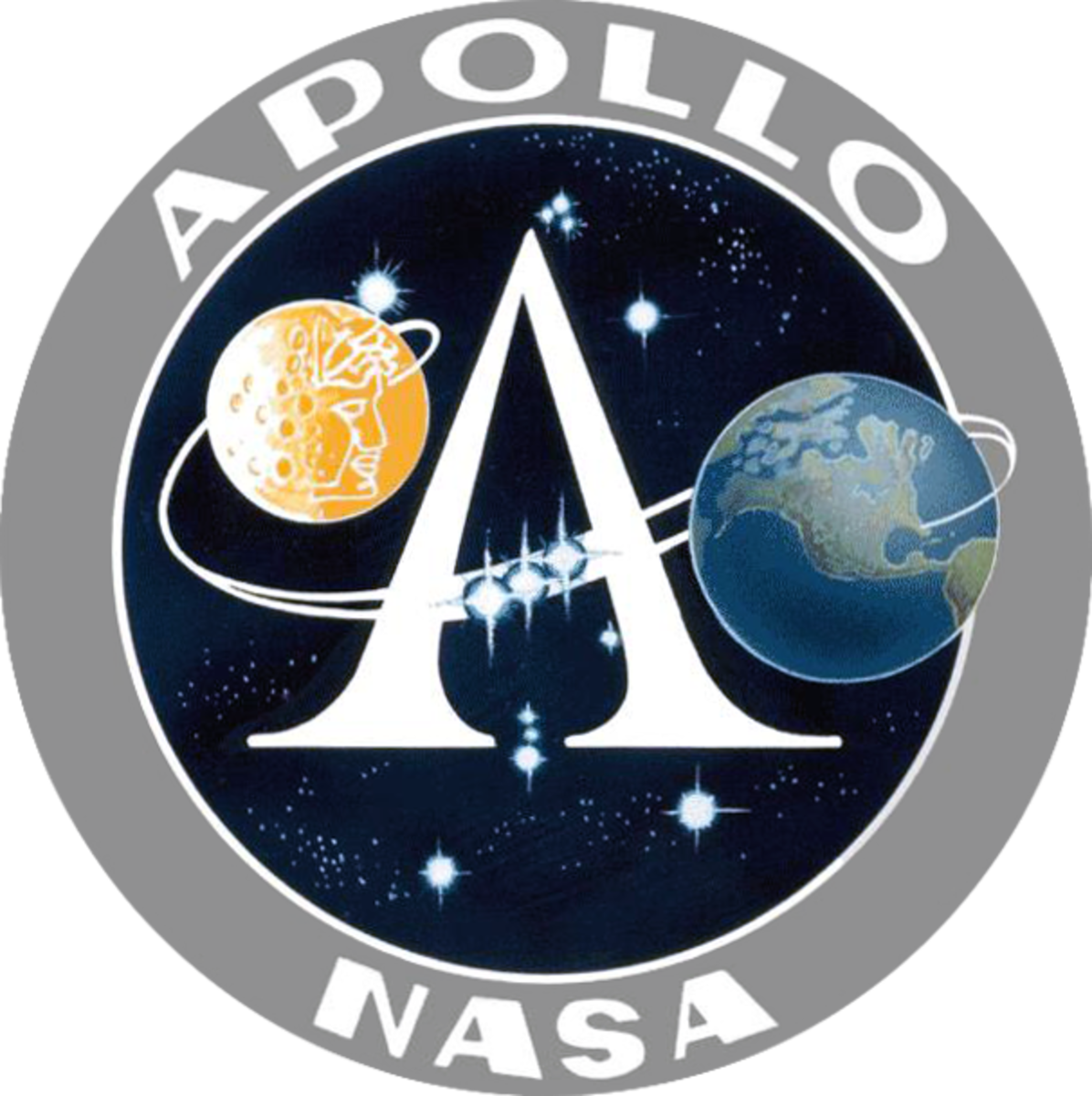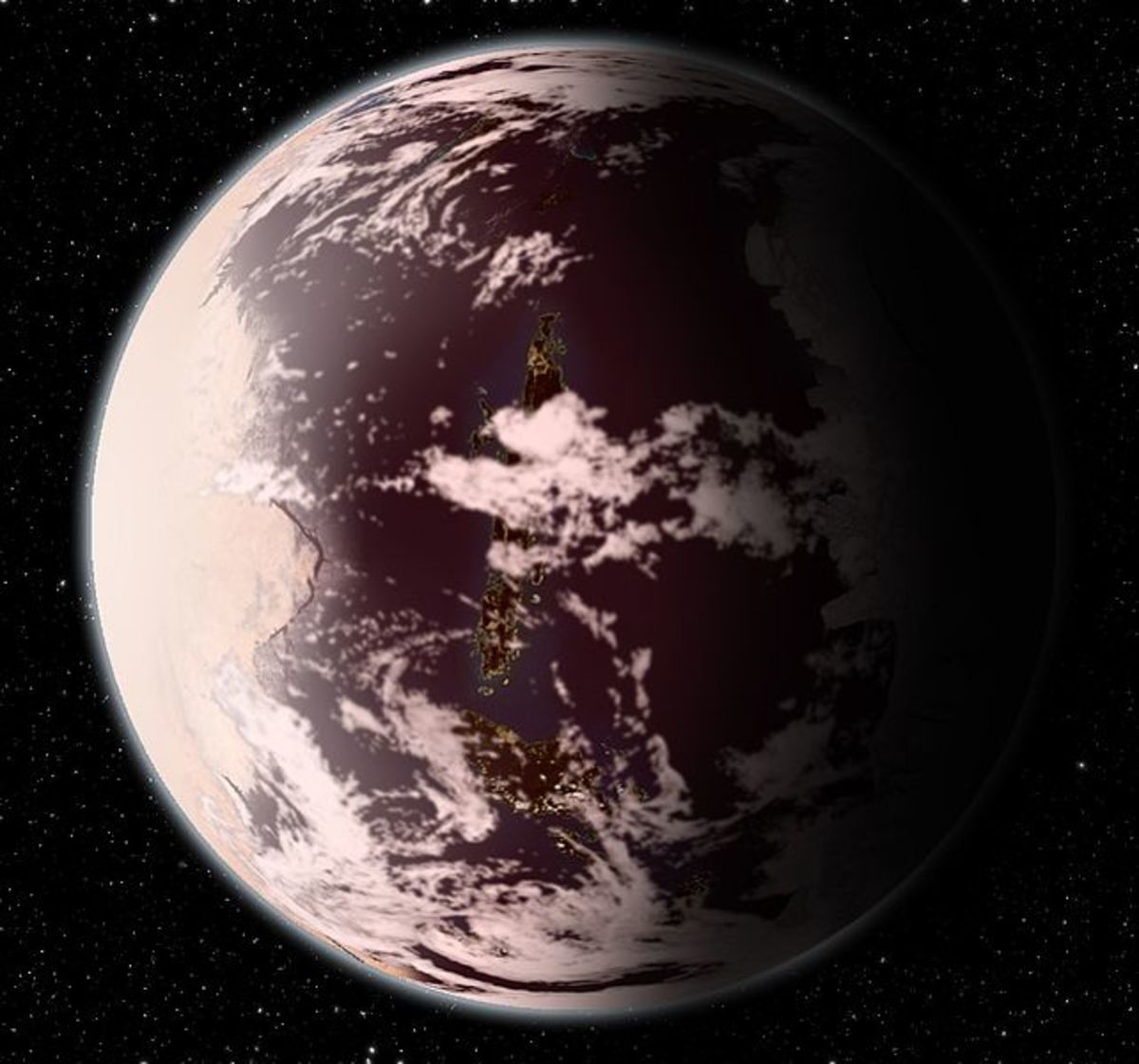Iapetus, The Seed Ship of Life
Seed Ship of Life
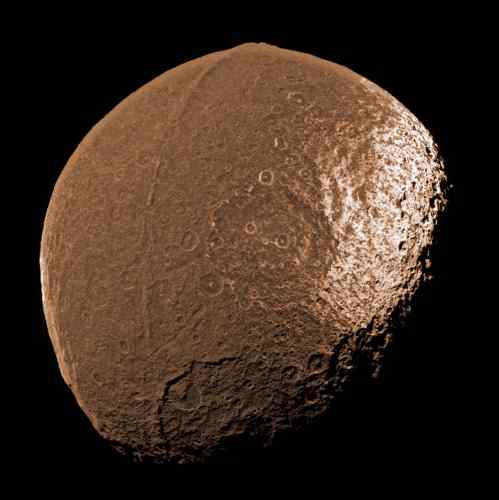
Saturn
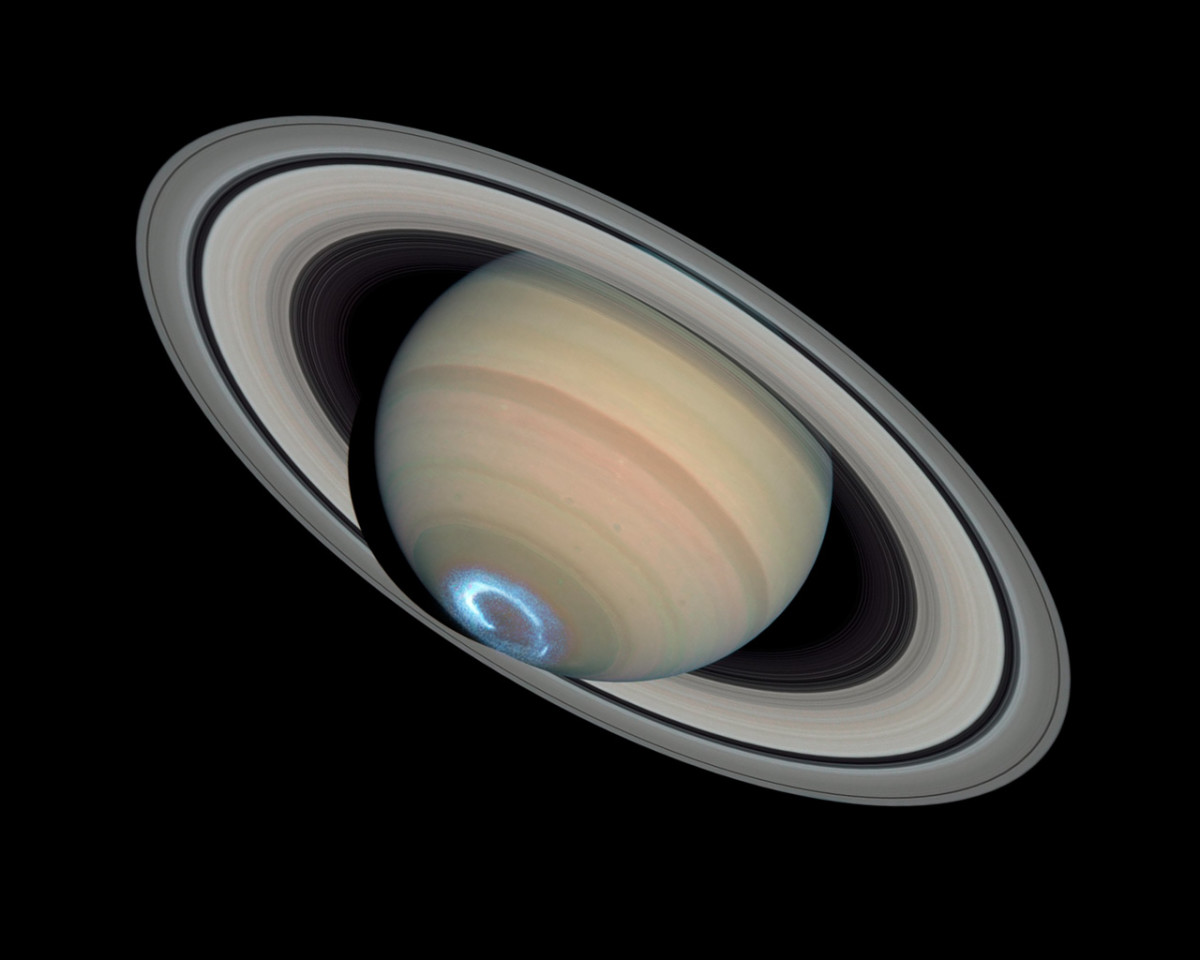
Hexagon from the Seed of Life
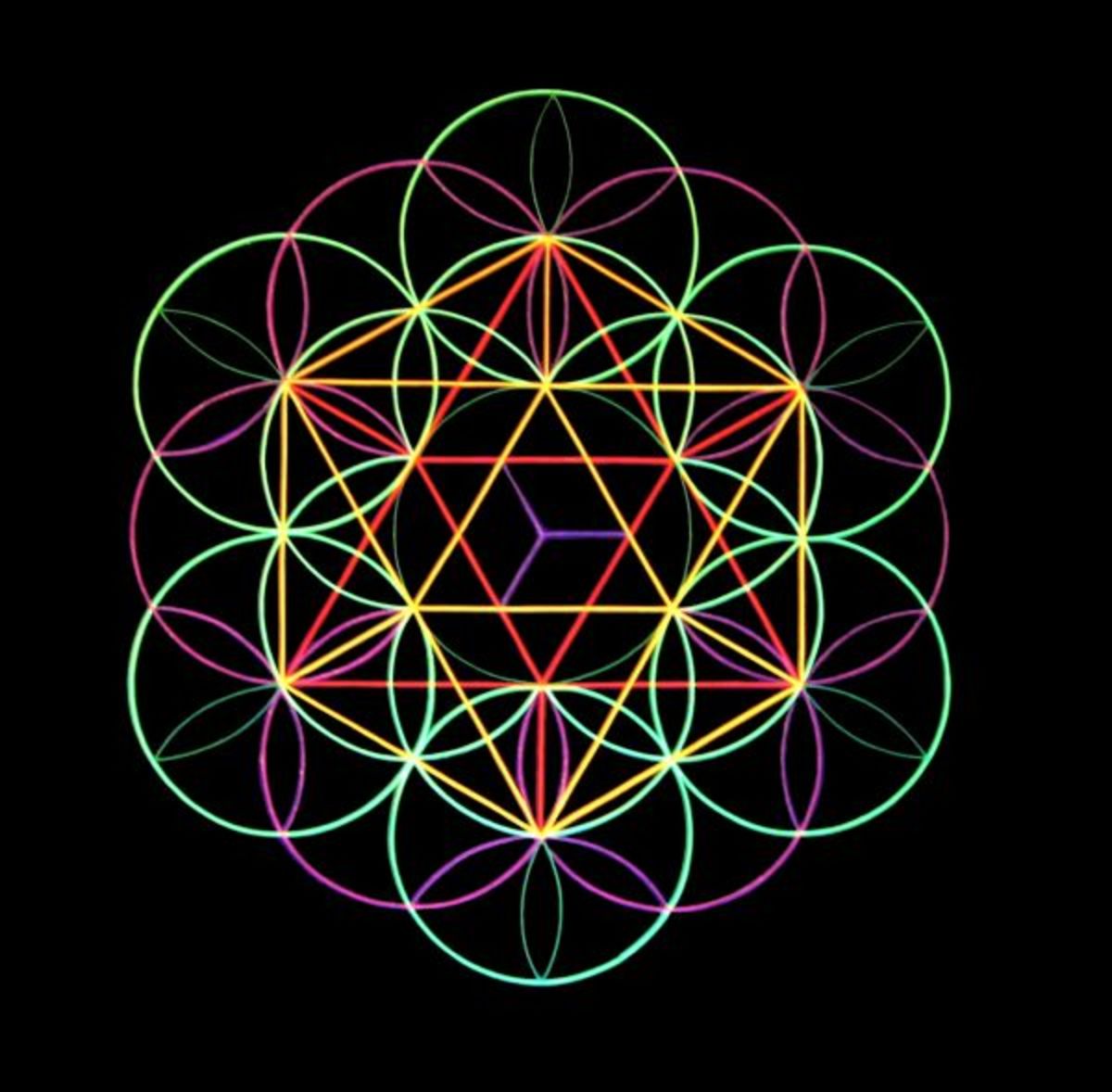
Seed Of Life
Iapetus, is a Moon of Saturn (known as the Ying/Yang Moon) one of 62 that circle the most easily recognizable planet in our solar system. The mysteries that surround this Moon are profound and difficult to reconcile with what 'science' knows about other Moons in our solar system. This article Iapetus, The Seed Ship Of Life will explore the possibility that it is in fact the Ark that brought life to our planet. While there are many theories and explanations that seek to unravel the mystery of this odd shaped Moon, and my idea is certainly not new or original, I will try to show why this idea makes the most sense to me.
Iapetus, acts and looks very much like an artificial structure in space, not like the many other Moons that surround Saturn or the many Moons that orbit other planets in our solar system. Mainstream science has always subscribed to the theory that gravity acts on planetary objects to force them into the shape of a sphere but for what ever reason Iapetus has not conformed to this theory. This theory is based on the centrifugal force created by the spin or rotation of the planetary body.
Because Earth rotates every 24 hours it has a slightly oblate shape that flattens at the poles. However Iapetus has a very leisurely rotation of 79 days and hence should have a completely spherical shape not at all conditioned by the centrifugal force of gravity. Another unusual feature is that its poles are 50 miles closer to its equator than they should be if it was indeed a spherical shape. This squashed appearance gives the shape of Iapetus a most geometrical definition, much like a Hexagon or the shape bees use to create a honeycomb.
The Hexagon shape is due to the flattened edges that show up in numerous photos from the Cassini space probe (2004) that show a straight line horizon of 60º angles, which of course would form a Hexagon. We know that when viewed as a cross section an Icosahedron (one of the five Platonic Solids or building blocks of all matter in the Universe) is the shape of a Hexagon. This lends itself to the idea that Iapetus is an artificial structure and not a natural Moon of Saturn.
The Moon Iapetus, if that is truly what it is, is named after a Titan from Greek Mythology and was the son of Uranus and Gaia, the father and mother of all the gods. Iapetus (meaning wound or pierce), sometimes referred to as Japetus, is the husband of Oceanus or Asia and father of four sons Prometheus, Atlas, Epimetheus and Meneotius and brother of Cronus whom was regarded as the ruler of humanity during the Golden Age of Man.
What distinguishes Iapetus from other Moons known to mankind is its distinct equatorial ridge, that makes it appear to be two halves joined in the middle much like a peach pit and the startling color contrast between it Western and Eastern hemispheres.
Ying & Yang

Iapetus: A Space Oddity
An interesting side note to this Ying & Yang appearance on the surface of Iapetus is that Arthur C. Clarke in his famous book 2001: A Space Odyssey, written before mankind had even stepped on the Moon and while the Russian and American space race was in its infancy, clearly describes features on Iapetus that weren't clearly defined until the space probe Voyager (1980) and later Cassini (2004) captured images of it.
The Casssini space probe, (named after Giovanni Domencio Cassini whom is given credit for the discovery of Iapetus in 1671) photos show a huge crater with a dark object at the center of it, exactly as described by Clarke in 2001: A Space Odyssey. I find this coincidence hard to reconcile, considering the implications of his book and subsequent movie of the same name, to what is now being learned about Iapetus and the possibility that it may be an artificial Moon or Space ship. Later Cassini photos showed what appears to be two large craters with structures inside them and two distinct shapes in the center, lending itself even further to the Ying & Yang symbol.
Richard Hoagland also discovers a monolithic shape protruding from Iapetus surface, incredibly similar to the monolith in 2001: A Space Odyssey. While Clarke has confessed that he does not know why he used Iapetus in his book, it does seem coincidental in the extreme to find that it indeed does have a monolithic structure on its surface.
However since Clarke was a scientist, astronomer and science fiction writer of extraordinary skill, perhaps he came to the same conclusions I have and used what little information that was known about Iapetus back in the mid sixties to craft his remarkable evolutionary tale of humanity or perhaps . . . he had divine help.
Arthur C. Clarke
Ying & Yang Moon
This dramatic separation of light and dark between its leading and trailing hemispheres, gives it the name the Ying and Yang Moon. Much like our own Moon, it has a dark side and light side, however the dark side (Cassini Regio) always points in the direction of its orbit. If seen from the surface of Saturn it would be neatly cut in half, one side dark and the other side light (Roncevaux Terra), perhaps this is where the ancient Ying & Yang symbol originates.
While other Moons such as the Earths and Jupiter's Europa have a dark and light side with one side perpetually pointing towards their host planet, only Iapetus has the split dark and light facing the planet. Just like the Ying & Yang symbol, Iapetus has two huge crater-like rings with a spot in the middle either light or dark depending on which side it is located. NASA's own press release had this to say about the contrasting dark and light coloration.
“Iapetus is a two-toned moon. The leading hemisphere is as dark as a freshly tarred street, and the white, trailing hemisphere resembles freshly fallen snow . . . "
This distinctive contrast has astronomers baffled, with the two prevailing theories are that either the dark matter came from space or that is from internal matter rising to the surface. However the most prevailing theory is that this coloring came from space as no reasonable explanation can account for any matter coming from an internal source.
Some researchers and astronomers have speculated that this dark matter seems eerily similar to the coating applied to the F-117 Stealth Fighter/Bomber as a means of deflecting radar signals and thus is designed as part of invisibility cloak of some sort.
However what seems more likely to this author is the exact opposite, since Iapetus can be clearly seen using even the most basic telescopes (Cassini 1671), regardless of its low radar reflectivity, perhaps this distinctively light and dark appearance was designed to be a beacon and draw attention to it. Just as the ancient Pyramids of Giza shows it to be a puzzle designed to be explored and understood, perhaps Iapetus is there to guide humanity to it as a means of furthering our stellar and spiritual education.
The most recent theory explaining the light and dark discoloration is due to how ice on the surface of Iapetus reacts to sunlight. While this theory is intriguing it isn't nearly as convincing as mainstream science would have us believe.
Iapetus Equatorial Ridge
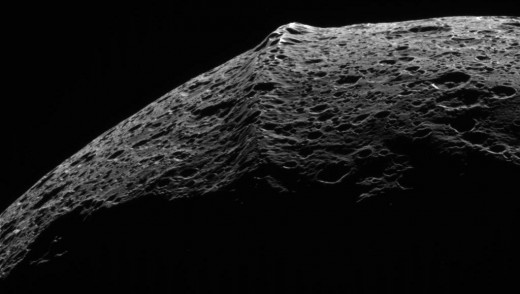

Larry Niven
Iapetus Equatorial Ridge
Another confounding anomaly not found on other Moons in our solar system is the distinct ridge located on the equator that is a uniform 12 kilometers high and almost completely circumnavigates Iapetus. This distinct feature that runs for 880 miles (diameter of Iapetus is 900 miles) is not known to exist on any other Moon in our solar system and is just one more piece that could indicate Iapetus is an artificial structure designed to draw humanities attention.
When I first saw this ridge, my first thought was that it reminded me of the classic sci-fi novel called Ring World and The Ring World Engineers by Larry Niven. Because if you consider that the Moon is hollow, then this equatorial ridge would resemble a U-shape on the inside and if you give Iapetus a light source or power source (small star) inside it would take on the exact features described in Niven's famous books.
There seems to be no existing reasonable theory to explain how this ridge, that looks to be very similar to a seam joining the Northern and Southern hemispheres of Iapetus together, could formulate on a moon with 1/40 the gravity of Earth. If indeed this is a natural formation, how was it created and what purpose does it serve and why have we not seen it on other Moon's in our solar system?
Regardless of how or why this ridge was formed, it exists and using the Occam's Razor theory ("when you have two competing theories that make exactly the same predictions, the simpler one is the better.") then perhaps it is exactly what it looks like a seam of material formed when two parts were 'welded' together to form a whole.
However this is not the only anomaly that defines Iapetus, The Seed Ship Of Life as an artificial construct, perhaps the most significant information lies in its orbit of Saturn.

Artificial or Natural
Do you think Iapetus is an natural or artificial Moon?
Iapetus Inclination
The orbit of Iapetus, The Seed Ship Of Life around Saturn, is similar to our own Moon and lends itself to the concept that is of artificial design. Just as our own Moon's distance from Earth is essentially 60 times (238,840 miles) the Earth's radius of 3,960 miles, so too is Iapetus distance from Saturn.
Of course 60 is a tetrahedral number and is commonly found in sacred geometry, 60º angles form a hexagon which is the shape of Iapetus itself. 60 is a division of 360º, a perfect circle of which Iapetus orbit is comprised of. The 60 degree angle is found consistently in sacred geometry and for Iapetus to have this number linked to it so many times cannot be considered a coincidence.
The almost perfect circle orbit of Iapetus is extremely odd for Moons in our solar system and its inclination of 15º is also unusual as it does not conform to the basic nebula theory of planet formation. This 15º inclination gives it a particularly good view of Saturn's rings and does not lend itself to the random chance theory proposed by scientist to explain both it eccentric distance from Saturn nor its inclination (15º).
Just as our Moon maintains an orbit of Earth that doesn't vary, so to does Iapetus orbit of Saturn. That fact alone creates much speculation but when one considers all the other factors involved it seems highly suspicious that Iapetus could be anything but an artificial satellite. All of these facts that have been gathered about Iapetus lends itself to my theory that it is indeed of artificial construction and that it is in our solar system for a specific reason, which I will outline below.
Arthur C. Clarke & Iapetus
Larry Niven
Star Wars
Review of Anomalous Features
Having the information outlined above provides even the most skeptical enough food for thought to recognize the extreme and remote improbabilities that Iapetus is anything but an artificial construction. The fact that NASA continuously ignores all of these factors when dispensing information about Iapetus and has even gone to great lengths to create highly improbable theories to explain these anomalous factors, is a major red flag to even the most casual observer.
Let's review these anomalous features once more before I deliver my theory for the existence of Iapetus, The Seed Ship Of Life in our solar system and remember that NASA completely ignores any mention of these in public press releases.
-
A monolithic shape protruding from the surface of the Moon, that looks strikingly similar to the star gate structure used in 2001: A Space Odyssey.
-
An equatorial ridge or seam, 8 miles high, circumnavigating the Moon and very similar to the ring used in the science fiction classic Ring World by Larry Niven.
-
Hexagonal craters with structures in the middle aligned with the equatorial ridge.
-
The shape of Iapetus itself is a hexagon and one of the Platonic Solids, the building blocks of the Universe.
-
The fact that a hexagon is comprised of 60º angles.
-
The highly unusual orbit, its 15º inclination and eccentric distance of 60 times the radius of Saturn.
-
The orbit itself is almost a perfect circle (360º), which of course is divisibly by 60.
-
The fact that only one side of Iapetus can be seen from the surface of Saturn.
-
The fact that this side shows a split between light and dark in the shape of the famous Ying and Yang symbol, complete with dots of light and dark.
-
The fact that Iapetus shows a striking resemblance to the Death Star space ship used in the Star Wars trilogy movies.
Could the image of Iapetus, The Seed Ship of Life have been used in the Star Wars movies as the Death Star as a way to prevent humanity from recognizing and it as the true Ark of Civilization?
The fact that NASA photos of Iapetus seem to get less distinct and blurry the closer the Cassini probe gets to the Moon seems to indicate they are trying to hide something from the public. NASA has consistently airbrushed and removed features from photographs of planets and moons in our solar system for decades and when this is done and it is fairly obvious, it shows that they routinely censor information form the public.
“a 900 mile-wide, manufactured, ancient world-sized spaceship… created under 1/40th terrestrial gravity according to a fractally apparent, ‘tetrahedral’ pattern!”
“These are the shattered, blasted remnants of an ancient, almost incomprehensible science and technology… stark, surviving evidence of a “super-engineering” that once held together an entire world… and for some reason, placed it in the Saturn system.”
— Richard HoaglandLife Star
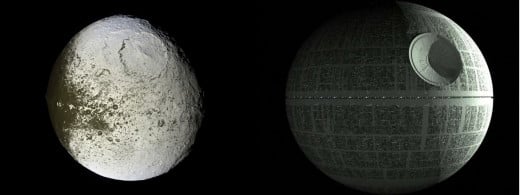
Related Articles
- The Moon, Earth's First Space Station
Is Earth's First Space Station the Moon? Wouldn't the perfect disguise for a space station used to observe Earth inhabitants look like an abandoned Moon? This article explores this idea with recent research, unexplainable facts and unique conclusions - Two Moons Get Real
Two Moons Get Real explores the disinformation around recent articles on the internet espousing the concept that Earth has always had two Moons. It helps explain how disinformation is spread and why and shows why the public should not panic. - Truth Exists, Fiction is Created by Government Coverup
In Truth Exists Fiction is Created the author takes a look at Full Disclosure and why he believes it is imminent. The date of December 21, 2012 and why it is important to the World population and ancient cultures, the Alien presence and UFO's.
Iapetus, The Seed Ship Of Life
My theory, in a nutshell (walnut) is that Iapetus, The Seed Ship Of Life is the original Ark that brought human and animal life to the planet Earth. I submit to my reader that there exists a race of beings, very similar to humans, whose mission it is to provide sentient life to planets throughout the Galaxy that are capable of harboring life.
This race of beings, that I choose to call the Keepers of the Garden after reading a book by Dolores Cannon of the same name, have existed for billions of years and have been commissioned by the Creator of All to provide life forms specifically designed and created for each individual planet and their atmospheres.
The Keepers/Guardians/Watchers/Angels whatever you wish to call them use already existing asteroids and small moons that have been modified into ships to transport this genetic material and life forms from their home base to the hospitable planets designated for sentient life. They use these 'modified moons' or mother ships so that they can be parked in orbit of neighboring planets or even the designated planet of life and will not be easily recognized as space ships by either the citizens of the planet or curious neighbors.
They then use these artificially created Moons as a home base of operations to periodically modify, enhance or add too the' life planets' without having to send a new ship into remote areas of the Galaxy from their home world. This system allows them to monitor these 'life planets', keep unwanted neighbors from interfering with the evolution of less developed races and prevent wandering asteroids and other factors from altering the natural evolution of said species.
It allows them to operate in anonymity, while providing assistance to the evolving life forms in terms of the natural cyclic Ascension process that all planet with sentient life go through.
While this is certainly not an original idea and has been repeated many times in many different forms, the most recent I can think of the popular Japanese anime TV series the Neon Genesis Evangelion it does show that for this idea to have been repeated so many times by so many different cultures throughout our planet that it certainly deserves consideration has some measure of merit.
This idea or concept has been prevalent in my life for almost forty years ever since I began reading science fiction novels, so it is always fun and rewarding to find pieces of the puzzle that fit into the overall picture or paradigm that one conceives of early in life. Iapetus, The Seed Ship Of Life was a fun article to write and research and I hope it has provided the reader with enough food for thought to merit serious consideration.
© 2015 somethgblue





